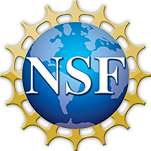Abstract
The purpose of this project was to apply metatranscriptomic methods to North Atlantic pelagic clay sediment, in order to better understand the microbial activities in this habitat. Deep-sea pelagic clays contain extremely low organic matter and oxygen penetrates deeply into the sediment, which should be the major high-energy electron acceptor supporting microbial life. However, cell counts in pelagic clays are relatively low suggesting they are limited by availability of electron donors (e.g., organic matter). In contrast, organic rich yet oxidant limited continental margin sediment has much higher cell abundances. This project has produced new metatranscriptomes in electron donor limited pelagic clays from two sites in the North Atlantic, which are being compared to existing metatranscriptomic data from oxidant limited Peru Margin sediment. Metatranscriptomes from one hole have been sequenced and preliminary analysis indicates active DNA repair, energy production, and organic matter degradation by the in situ microbial communities. These data are currently being analyzed in greater detail, and funds are being sought to sequence the metatranscriptome libraries from a second hole, which will strengthen the conclusions. The results will be compared to metatranscriptomes from oxidant limited Peru Margin, in order to better understand subseafloor microbial adaptations and activities under electron donor versus oxidant limitation.

